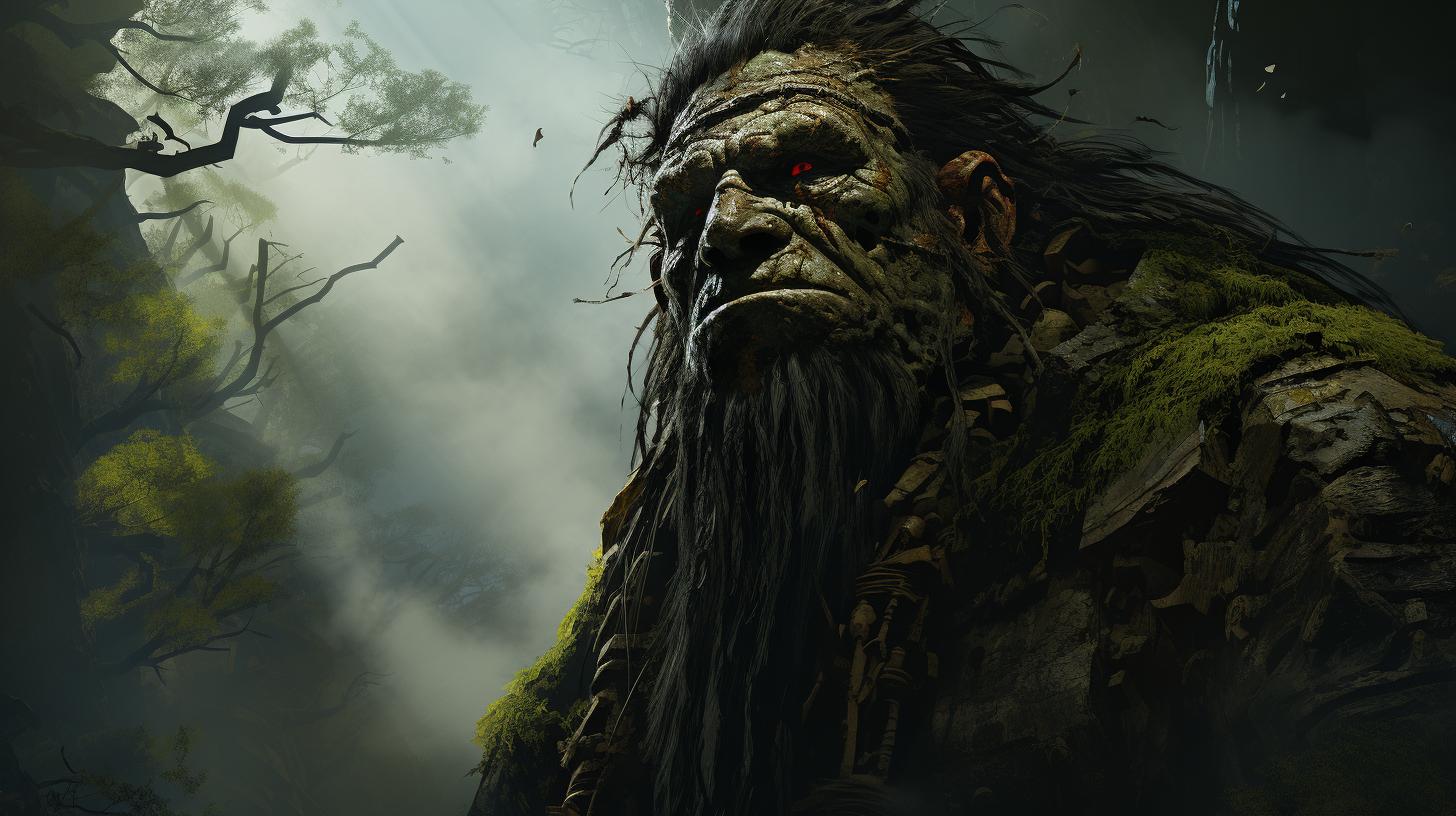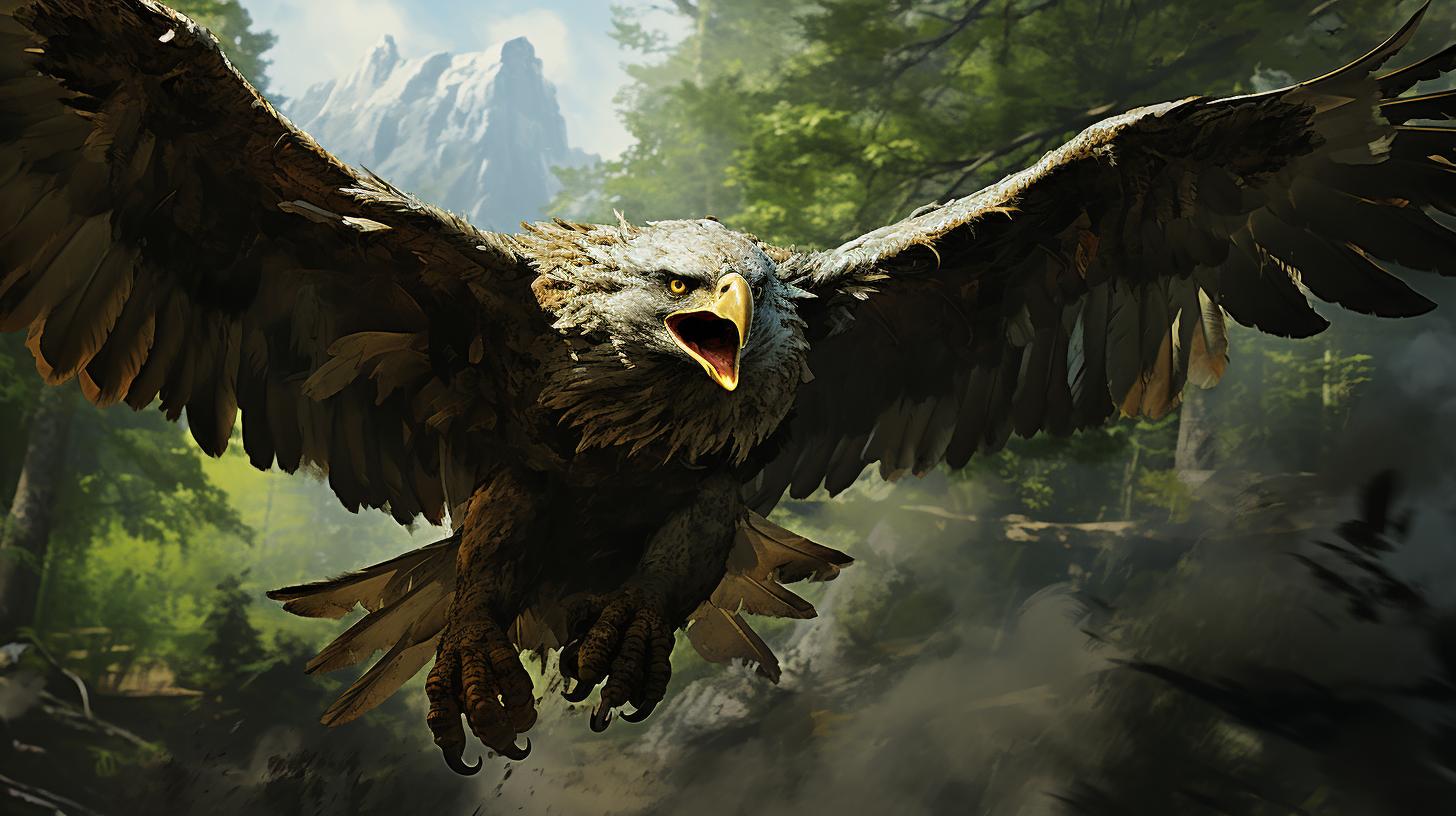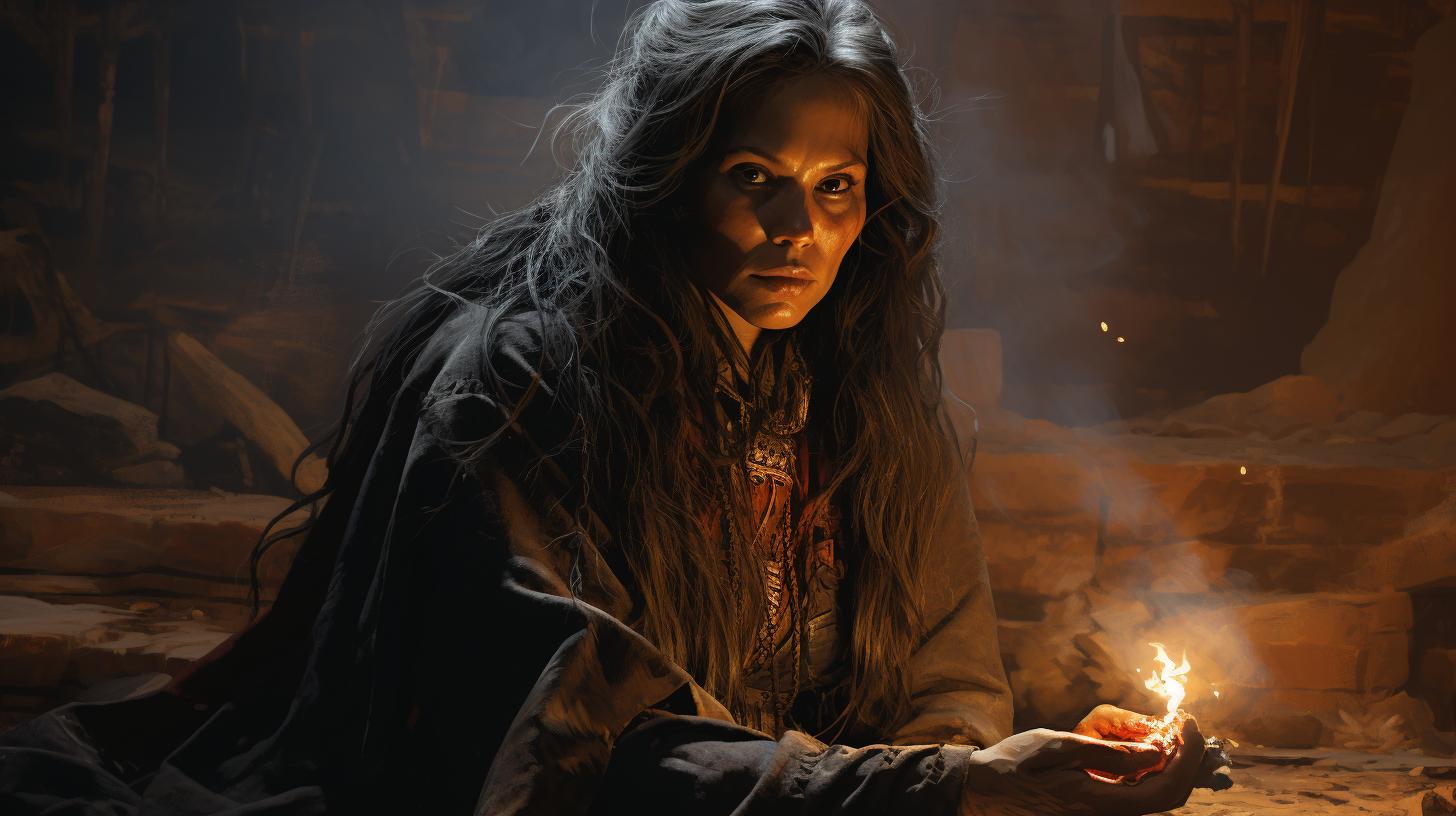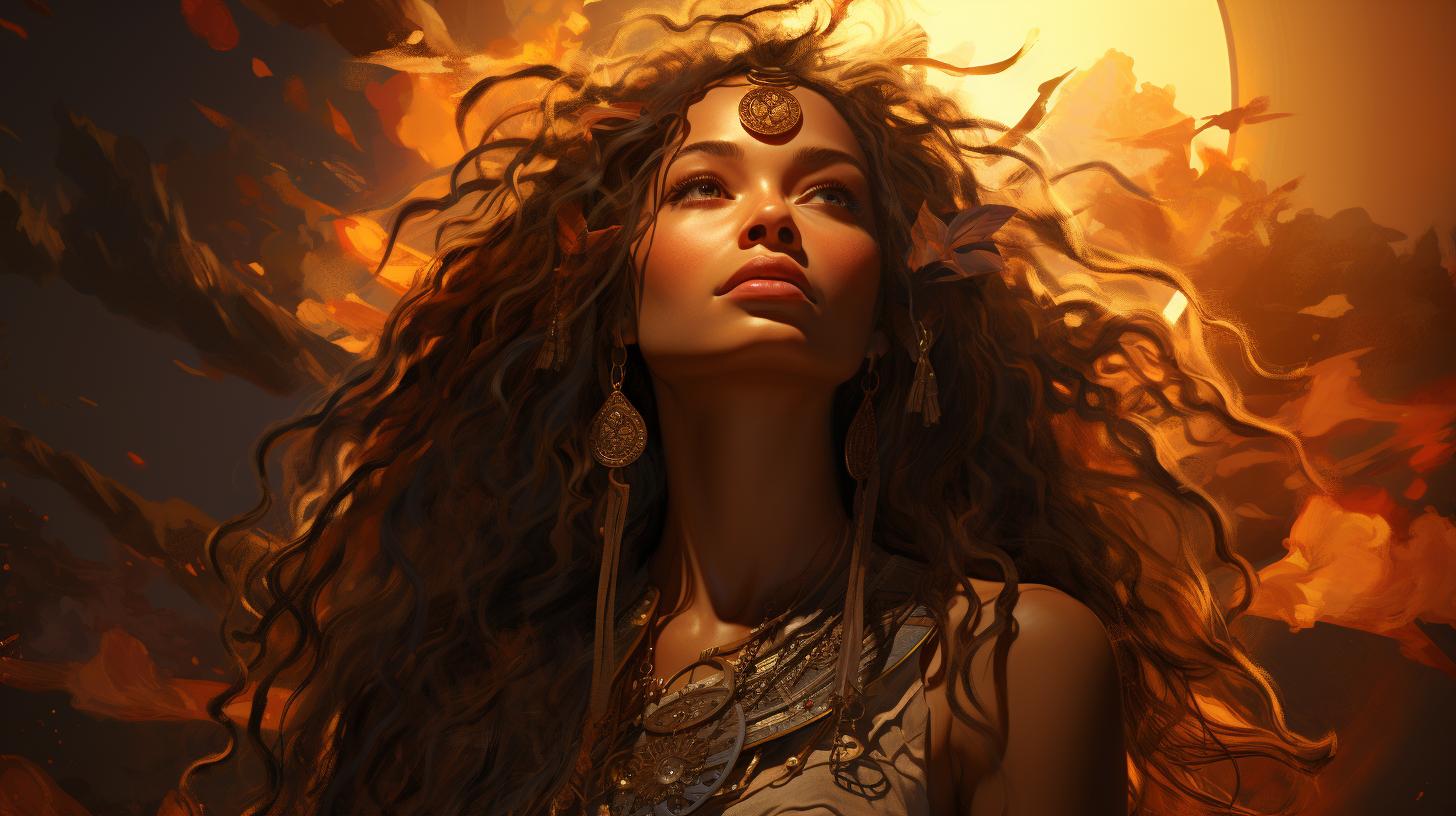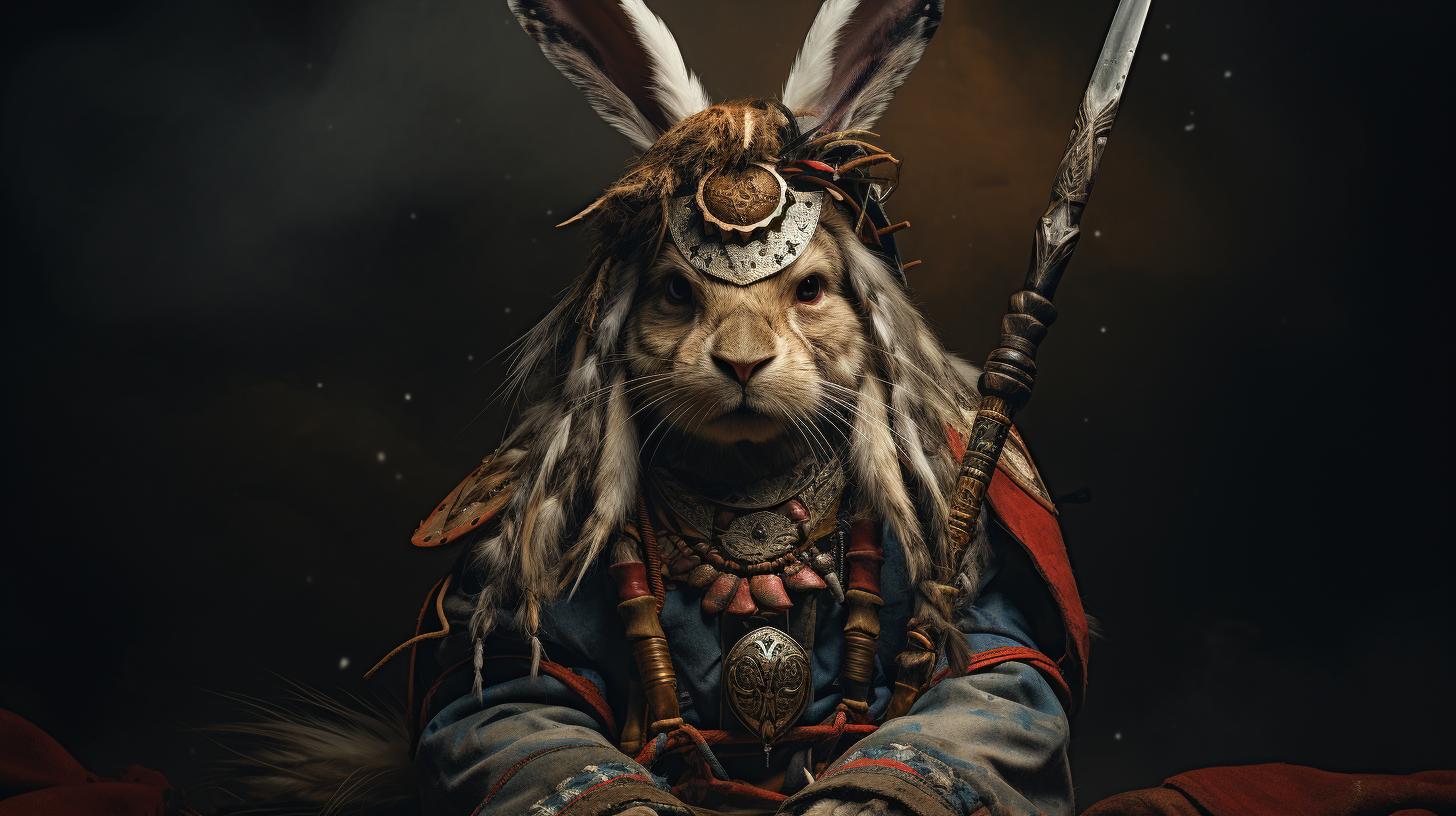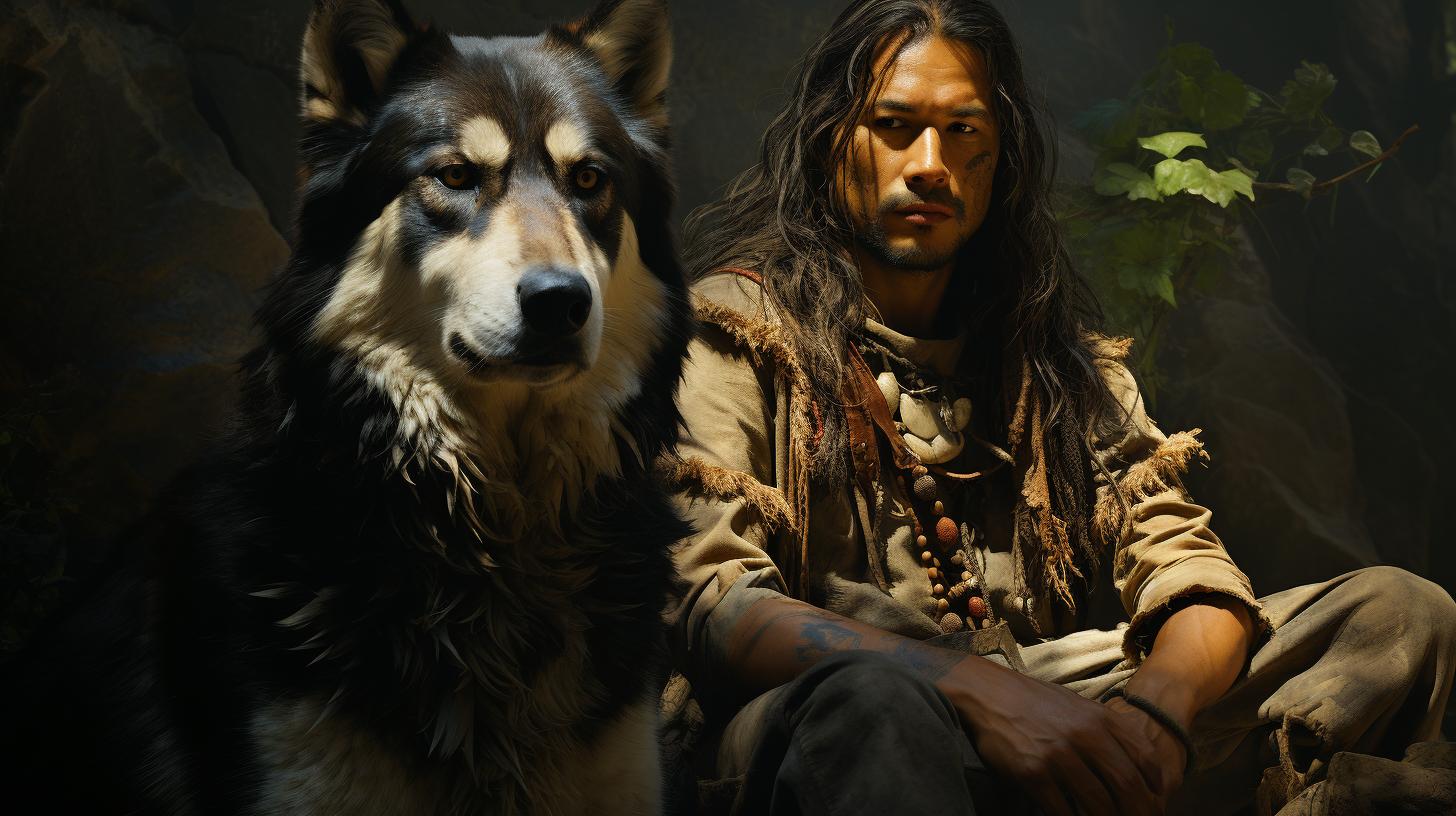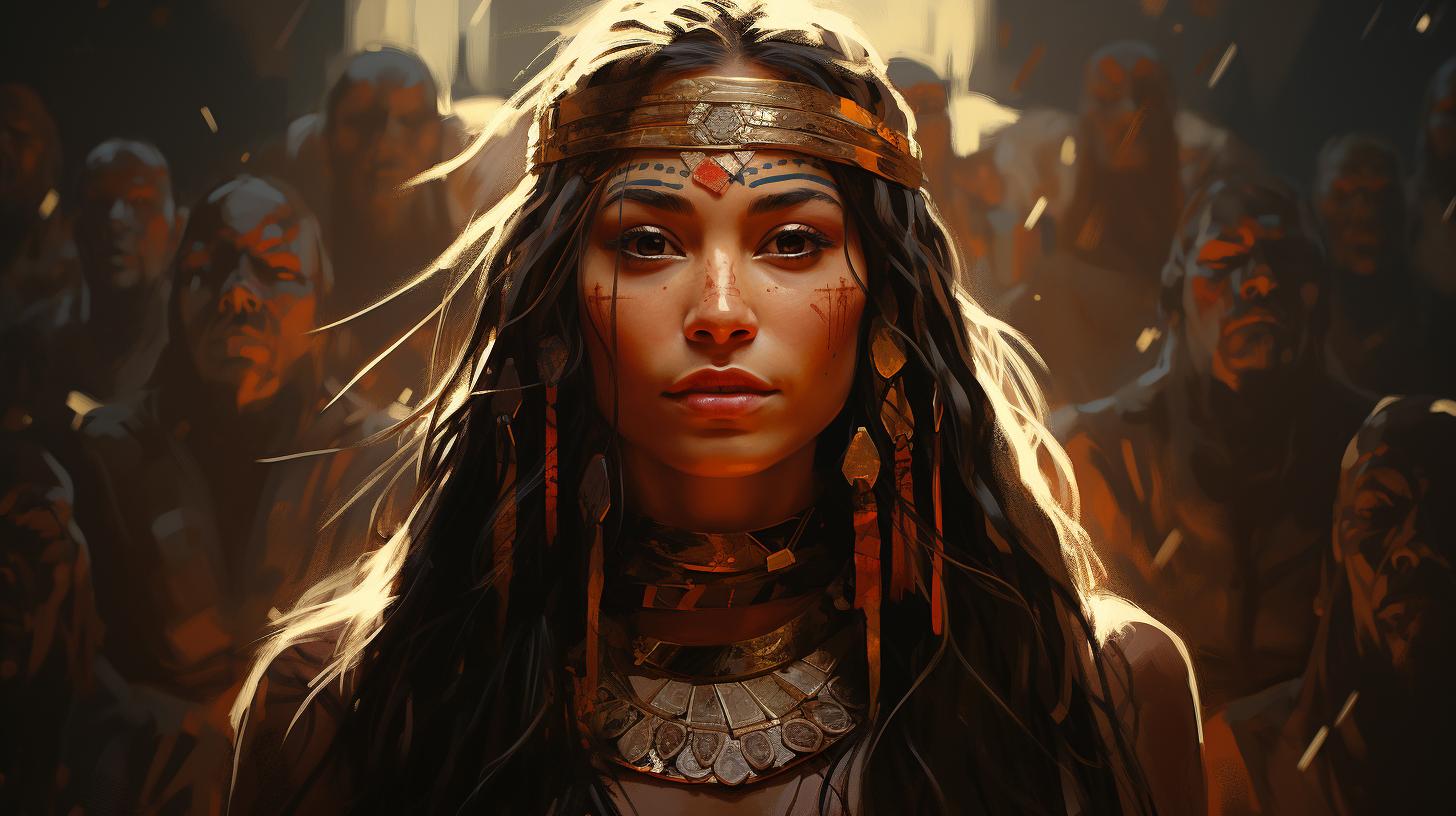Tsul Kalu: The Mysterious Giant of Cherokee Mythology
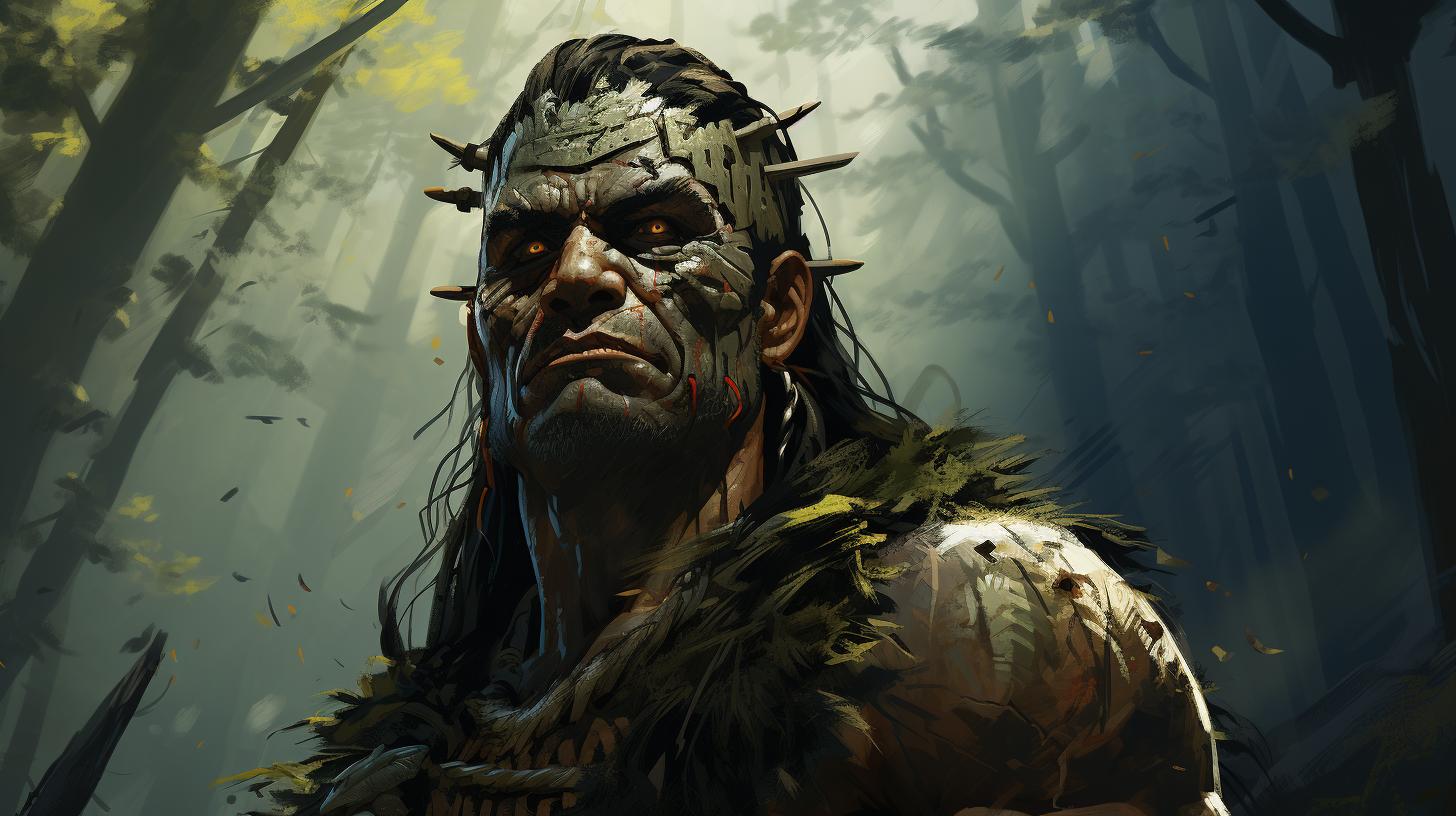
Tsul Kalu is a prominent figure in Cherokee mythology, known as the ‘Mysterious Giant of Cherokee Mythology.’ This enigmatic creature is described as a giant with long, tangled hair and glowing red eyes.
Legends and tales highlight Tsul Kalu’s interactions with humans, emphasizing the importance of respecting nature and showing humility. As a protector of nature, Tsul Kalu holds a significant role in Cherokee culture and heritage.
Exploring its origins, characteristics, and significance in the Cherokee nation, Tsul Kalu remains a symbol of Cherokee identity and their deep connection to the natural world.
Tsul Kalu: The Mysterious Giant of Cherokee Mythology
In Cherokee mythology, Tsul Kalu is a legendary figure known as the “Mysterious Giant of Cherokee Mythology.”
This enigmatic being has captured the fascination of the Cherokee people for generations. Tsul Kalu is described as a colossal creature, shrouded in mystery, with long and tangled hair, and eyes that gleam like burning coals.
As a central figure in Cherokee folklore, Tsul Kalu holds a significant place in the tribe’s cultural heritage. Legends and tales surrounding Tsul Kalu depict the creature as a formidable guardian of the deep forests and towering mountains, a protector of the natural world.
The stories of encounters with Tsul Kalu emphasize the importance of respecting and cherishing the harmony between humans and nature. According to Cherokee belief, Tsul Kalu embodies the spirit of the wilderness, epitomizing the delicate balance between humans and the environment.
While Tsul Kalu may exhibit mischievous behaviors at times, it is revered as a symbol of the Cherokee connection to the earth. The creature’s presence serves as a reminder to approach nature with humility and reverence, acknowledging the power and wisdom it possesses.
The myth of Tsul Kalu has been passed down through generations, serving as a cautionary tale of the consequences that may arise from disrupting the natural order. The Cherokee people hold profound respect for Tsul Kalu, recognizing its role as a guardian and teacher.
- Enigmatic figure with long and tangled hair
- Eyes that gleam like burning coals
- Protector of the natural world
- Symbolizes the Cherokee connection to the earth
As the stories continue to be shared and cherished, Tsul Kalu stands as a testament to the Cherokee people’s deep-rooted relationship with nature.
It serves as a constant reminder of the importance of preservation and sustenance of the environment for future generations.
The Origins of Tsul Kalu in Cherokee Folklore
In Cherokee folklore, Tsul Kalu holds a significant place as a mythical being with deep cultural roots. Legend has it that Tsul Kalu, also known as the ‘Mysterious Giant of Cherokee Mythology,’ has existed since time immemorial, connected to the very fabric of the Cherokee people’s history and traditions.
Cherokee elders pass down stories that depict Tsul Kalu as a primordial creature, created by the spiritual forces that shaped the world. According to Cherokee belief, Tsul Kalu emerged from the depths of the earth, embodying the harmony between the natural and supernatural realms.
It is said that Tsul Kalu possesses a divine essence, representing the bridge between earthly beings and the spiritual entities that govern the universe. The origins of Tsul Kalu reflect the profound spirituality and reverence for the natural world ingrained within Cherokee culture.
The Mythical Accounts and Cultural Significance
In Cherokee folklore, the origins of Tsul Kalu intertwine with the sacred tales and rituals passed down through generations. The Cherokee people hold Tsul Kalu in high regard as a guardian of ancestral wisdom and spiritual balance.
According to the legends, Tsul Kalu’s emergence aligns with key creation stories within Cherokee mythology. It is believed that Tsul Kalu possesses ancient knowledge and acts as a guide for those seeking wisdom and connection to the spiritual realm.
The presence of Tsul Kalu in Cherokee culture serves as a reminder of the tribe’s intimate connection with nature and the importance of understanding and honoring the natural world. It symbolizes the Cherokee people’s desire to maintain harmony with their surroundings and respect the delicate balance that exists within the ecosystem.
Illustrating Tsul Kalu’s Origins
Cherokee folklore paints a vivid picture of Tsul Kalu’s origins, depicting the creature’s emergence from sacred landscapes and natural phenomena. In these accounts, Tsul Kalu is often associated with mystical sites such as ancient forests, towering mountains, and powerful waterways.
These mythical narratives not only highlight Tsul Kalu’s origin but also emphasize the interconnectedness between the creature and the geography of Cherokee lands. The stories suggest that Tsul Kalu’s nature and purpose are deeply tied to the natural world, underscoring the significance of the relationship between the Cherokee people and their ancestral lands.
As an integral part of Cherokee folklore, Tsul Kalu’s origins resonate with the community’s spiritual beliefs, cultural practices, and profound connection to their heritage. This enigmatic being continues to captivate and inspire, serving as a reminder of the wisdom and teachings embedded within the Cherokee culture.
The Appearance and Characteristics of Tsul Kalu
Described as the ‘Mysterious Giant of Cherokee Mythology,’ Tsul Kalu possesses unique and captivating traits that distinguish it within Cherokee folklore. Standing tall and imposing, Tsul Kalu is depicted as a colossal figure covered in long, matted hair that cascades down its towering frame.
Its eyes, an intense shade of red, seem to glow with an otherworldly brilliance, leaving a lasting impression on those fortunate enough (or perhaps unfortunate enough) to encounter this mythical creature.
The appearance of Tsul Kalu exudes an aura of both fascination and fear. Its immense size, coupled with its wild and unkempt hair, conveys a sense of inherent power and mystery.
The redness of its eyes is often perceived as an indication of its connection to forces beyond human understanding. The mere sight of Tsul Kalu can evoke a mixture of awe and trepidation, captivating the imagination and stirring the belief in an unseen world intertwined with our own.
However, it is not merely Tsul Kalu’s physical appearance that lends it an air of intrigue; its characteristics and behaviors further contribute to its enigmatic nature. Folklore describes Tsul Kalu as a mischievous yet benevolent creature, capable of appearing both playful and protective.
Despite its colossal size, Tsul Kalu moves with surprising agility and grace, seemingly defying the limitations imposed by its massive frame.
Legends recount various encounters with Tsul Kalu, wherein the giant often displays a preference for the depths of forests and mountains, where it can disappear and reappear at will.
Its nimbleness allows it to traverse through the dense foliage with remarkable ease, effortlessly blending into its natural surroundings. Tsul Kalu’s presence is often associated with a sense of safeguarding the wilderness, maintaining the delicate balance between humanity and the untamed world.
While its mischievous nature may lead it to engage in playful pranks or tricks, Tsul Kalu is also known as a protector of nature, emphasizing the importance of respecting and preserving the natural world.
Cherokee tales emphasize the significance of showing humility and reverence towards the environment, as Tsul Kalu embodies the consequences of disregarding these values.
As an iconic figure within Cherokee mythology, Tsul Kalu’s appearance and characteristics signify the inseparable bond between the Cherokee people and the natural realm.
Its presence serves as a reminder for individuals to cultivate a sense of awe and respect towards nature, recognizing its immense power and delicate intricacies. Through stories and legends, Tsul Kalu continues to inspire and educate, embodying the essence of Cherokee identity and heritage.
Legends and Tales of Tsul Kalu’s Interactions with Humans
Throughout Cherokee folklore, numerous legends and tales depict the intriguing interactions between Tsul Kalu and humans. These stories offer insights into the awe-inspiring encounters and lessons learned from encountering this mysterious giant.
One popular legend tells of a hunter who ventured deep into the dense forests of Cherokee territory. While searching for game, he suddenly stumbled upon the imposing figure of Tsul Kalu.
The hunter was filled with both fear and curiosity, unsure of how to react to this massive creature. Yet, to his astonishment, Tsul Kalu did not show any aggression towards him.
Instead, the giant gently gestured for the hunter to follow him.
As they journeyed together, the hunter witnessed Tsul Kalu’s deep reverence for the natural world. He saw how the giant carefully preserved and protected the plants, animals, and spirits of the forest.
Tsul Kalu taught the hunter the importance of respecting all living beings and the interconnectedness of nature.
In another tale, a group of young Cherokee children lost their way while exploring the mountains.
They stumbled upon Tsul Kalu, whose fierce appearance initially frightened them. However, the giant’s kind and wise nature soon became evident. Tsul Kalu offered guidance, leading the children safely back to their village.
From that day forward, the children expressed a newfound appreciation for the harmonious relationship between humans and the natural world.
These legends and tales demonstrate Tsul Kalu’s role as both a teacher and guardian.
Through encounters with humans, the giant imparts wisdom and emphasizes the Cherokee belief in maintaining a respectful coexistence with the environment. The stories serve as a reminder of the importance of humility, mindfulness, and stewardship in preserving the delicate balance of nature.
The Role of Tsul Kalu as a Protector of Nature
Within Cherokee mythology, Tsul Kalu holds a significant role as a guardian and protector of the natural world. Legends and tales illustrate Tsul Kalu’s deep connection to the environment, emphasizing the importance of respecting and preserving the delicate balance of nature.
As a colossal creature with an enigmatic presence, Tsul Kalu symbolizes the power and majesty of the wilderness. It is believed that Tsul Kalu dwells deep within the forests and mountains, watching over the flora and fauna in its domain.
According to Cherokee folklore, Tsul Kalu has the ability to shape-shift into different animal forms, enabling it to move through the natural world unnoticed. This shape-shifting ability allows Tsul Kalu to observe any disturbances within the ecosystem, ensuring that harmony is maintained.
- Tsul Kalu’s vigilance extends to the preservation of rivers, lakes, and other bodies of water. It is said that Tsul Kalu intervenes when the waters are threatened by pollution, drought, or misuse, working to restore balance and protect aquatic life.
- Tsul Kalu also acts as a guardian of the forests, with the responsibility of preserving the rich biodiversity within these sacred spaces.
It is believed that Tsul Kalu ensures the sustainability of plant life and the habitats of various animals.
- Additionally, Tsul Kalu demonstrates a special affinity for endangered species, taking a particular interest in their survival.
Legends recount instances where Tsul Kalu has helped protect and guide creatures on the brink of extinction, highlighting its commitment to preserving the delicate web of life.
Cherokee tales emphasize that encountering Tsul Kalu in the wilderness serves as a reminder of the importance of respecting nature.
Such encounters often convey lessons of humility, urging individuals to recognize their role as stewards of the earth.
Moreover, Tsul Kalu’s status as a protector of nature encourages a deep reverence for the environment among the Cherokee people.
It serves as a constant reminder of the interconnectedness of all living beings and the responsibility to cherish and care for the natural world.
As the Cherokee continue to uphold their traditions and cultural practices, the role of Tsul Kalu as a protector of nature remains integral to their collective identity and serves as a guiding principle in their ongoing efforts to maintain a harmonious relationship with the world around them.
Tsul Kalu in Relation to Other Creatures in Cherokee Mythology
Within the rich Cherokee mythology, Tsul Kalu stands tall as a prominent figure, but it is not alone in the pantheon of legendary creatures. The folklore of the Cherokee tribe encompasses a diverse array of beings, each with their own unique stories and significance.
One notable group of creatures mentioned in Cherokee texts is the humanoid hairy beings. These include iconic figures like the Bigfoot, Batsquatch, Sasquatch, Tokoloshe, Boggy Creek Monster, and Yowie. Despite their distinct characteristics, all of them are believed to inhabit different parts of the world.
Another group of creatures associated with primates are also mentioned in Cherokee folklore. The Hibagon, Almas, Ucumar, and Monkey Man of New Delhi are said to possess supernatural abilities and share a connection with their primate counterparts.
On the other hand, Cherokee mythology also acknowledges the existence of humanoid reptilian creatures. The Cherufe, Kappa, Intulo, Gator Man, Naga, and Thetis Lake Monster are depicted as reptile-like beings believed to dwell in bodies of water such as rivers and lakes.
Furthermore, werewolves, known as half-human, half-wolf entities, play a role in Cherokee legends. Creatures such as the Beast of Gevaudan, Ozark Howler, Amaguq, Deridder Roadkill, Rougarou, and the White Things (Devil Dogs) are associated with this supernatural archetype.
However, amidst this diverse array of creatures, Tsul Kalu holds a special place. As the ‘Great Giant of Closed Eyes,’ Tsul Kalu is depicted as a colossal entity with long, tangled hair and vivid red eyes.
Residing deep within the forests and mountains, Tsul Kalu’s mischievous nature intertwines with its role as a protector of nature. Encounters with Tsul Kalu emphasize the significance of respecting and preserving the natural world while embodying the essence of Cherokee cultural heritage.
These various creatures, including Tsul Kalu, are not just simple legends but embodiments of the Cherokee people’s close bond with the environment and their intricate worldview. Their stories and folklore continue to inspire and educate, reminding us of the profound legacy of the Cherokee Nation and its rich cultural heritage.
Tsul Kalu and the Importance of Respecting the Natural World
Tsul Kalu, the ‘Mysterious Giant of Cherokee Mythology,’ embodies a profound connection between the Cherokee people and the natural world. Within Cherokee folklore, Tsul Kalu assumes the role of a guardian and protector of nature, reminding humans of the significance of respecting and revering the natural realm.
The legends and tales surrounding Tsul Kalu emphasize the harmonious relationship between humans and the environment. Tsul Kalu’s presence serves as a reminder of the interdependence between humanity and the natural world, urging individuals to tread carefully and show humility towards the Earth’s wonders.
In Cherokee culture, Tsul Kalu’s role as a nature guardian extends beyond a mere mythological figure. The stories of encounters with Tsul Kalu instill a deep sense of responsibility towards the ecosystem, encouraging stewardship and conservation of natural resources.
- Recognizing the Sacredness of the Land: The stories of Tsul Kalu highlight the sacredness of the land in Cherokee culture. By respecting the land and all its inhabitants, people can maintain a harmonious balance with nature.
- Preserving Biodiversity: Tsul Kalu reminds individuals of the importance of preserving biodiversity.
Each creature, no matter how mythical, serves a purpose in the intricate web of life.
- Protecting Natural Resources: The legends of Tsul Kalu serve as a call to protect and preserve the Earth’s natural resources.
From the forests to the rivers, the Cherokee people understand the necessity of sustainable practices to ensure a thriving environment for future generations.
- Living in Harmony with Nature: Tsul Kalu’s stories focus on the interconnectedness of all living beings.
A harmonious coexistence with nature involves recognizing the impact of human actions and making choices that align with the well-being of the natural world.
Through Tsul Kalu’s presence in Cherokee mythology, the Cherokee people express their deep reverence for the natural world and their understanding of the inherent value in protecting and respecting it.
Tsul Kalu serves as a reminder that humanity must take a responsible and sustainable approach to preserve the Earth’s beauty and abundance.
Tsul Kalu in Historical and Cultural Context of the Cherokee Nation
The presence of Tsul Kalu in Cherokee mythology reflects its deep-rooted significance within the historical and cultural context of the Cherokee Nation.
For centuries, the Cherokee people have relied on storytelling and oral traditions to pass down their history, beliefs, and cultural practices. Tsul Kalu’s role as a guardian of nature and its connection to the land resonates deeply with the Cherokee’s reverence for the natural world and their ancestral ties to the land they inhabit.
In Cherokee society, the reverence for Tsul Kalu extends beyond its mythical existence. It symbolizes the Cherokee people’s respect for the environment, their understanding of the delicate balance between humans and nature, and their understanding of the interconnectedness of all living beings.
Tsul Kalu represents a spiritual guardian, guiding the Cherokee people to maintain this delicate balance and live in harmony with the natural world.
Historically, Tsul Kalu’s tales have played a crucial role in shaping the Cherokee culture, influencing their values, rituals, and daily practices.
From hunting and gathering traditions to agricultural practices, the Cherokee people have incorporated Tsul Kalu’s teachings into their everyday lives, aiming to maintain a sustainable and respectful relationship with the land and its resources.
Additionally, Tsul Kalu’s cultural significance notably emerges in various ceremonies and celebrations within the Cherokee Nation. The creature’s presence is invoked during sacred rituals, symbolizing the Cherokee’s deep spiritual connection with the natural world and their belief in the guiding forces existing beyond our immediate perception.
Through prayer and ceremonial gatherings, the Cherokee people honor Tsul Kalu’s wisdom, seeking guidance and protection in their endeavors.
The preservation of Tsul Kalu’s cultural significance within the Cherokee Nation highlights the resilience and determination of the Cherokee people to retain their identity and heritage amidst changing times.
As modern society continues to evolve, the Cherokee people hold onto their ancestral beliefs and traditions, passing them down through generations, ensuring that Tsul Kalu’s teachings remain alive and relevant in the contemporary context.
In conclusion, Tsul Kalu’s historical and cultural context within the Cherokee Nation illuminates its vital role in shaping the beliefs, values, and practices of the Cherokee people. From its representation of ecological responsibility to its spiritual significance, Tsul Kalu symbolizes the timeless connection between the Cherokee people and the natural world.
As the Cherokee community continues to navigate the complexities of the modern world, Tsul Kalu’s teachings serve as a source of inspiration, guiding the Cherokee people to honor their heritage while embracing the future.
Tsul Kalu in Modern Interpretations and Representations
In contemporary times, Tsul Kalu continues to captivate the imagination and find its place in various artistic interpretations and representations. Artists, writers, and filmmakers have been inspired by the mystique surrounding this legendary creature, incorporating Tsul Kalu into their works.
Painters and sculptors have depicted Tsul Kalu in their artwork, showcasing its enormous stature, tangled hair, and fierce red eyes. These visual representations often aim to capture the sense of awe and reverence associated with Tsul Kalu, highlighting its role as a guardian of nature.
Literary works, such as novels and poetry, have also embraced Tsul Kalu as a symbolic figure. Authors explore its significance within Cherokee culture and its connection to the natural world. Through storytelling, Tsul Kalu’s tales are passed down, preserving Cherokee traditions and conveying the importance of respecting and nurturing the environment.
In film and television, Tsul Kalu has made appearances, either as central characters or as references within the storyline. These adaptations bring the legend of Tsul Kalu to a broader audience, fostering a deeper understanding of the Cherokee’s spiritual beliefs and their profound connection to nature.
Furthermore, Tsul Kalu’s presence extends to various cultural events and celebrations. During festivals and gatherings, artistic performances, such as dance and theater, incorporate Tsul Kalu stories and motifs, ensuring its continued relevance and keeping the mythology alive.
Moreover, in the digital realm, Tsul Kalu finds its place in video games and virtual experiences. Through interactive storytelling, players have the opportunity to engage with Tsul Kalu’s world, deepening their appreciation of Cherokee culture and inspiring them to develop a greater sense of environmental stewardship.
Overall, Tsul Kalu’s influence in modern interpretations and representations showcases the enduring significance of this mythical giant in the Cherokee heritage. As Tsul Kalu continues to evolve in contemporary art, literature, film, and digital media, it reinforces the cultural richness and spiritual connection of the Cherokee people to their environment.
Tsul Kalu: A Symbol of Cherokee Identity and Heritage
Within Cherokee mythology, Tsul Kalu holds a profound significance as a symbol of Cherokee identity and heritage. This enigmatic giant, with its long, tangled hair and radiant red eyes, represents the deep connection between the Cherokee people and the natural world around them.
Tsul Kalu’s role as a protector and guardian of nature reflects the Cherokee’s reverence for the environment and their belief in the interconnectedness of all living beings. The tales and legends surrounding Tsul Kalu emphasize the importance of respecting and preserving the delicate balance of nature.
Throughout history, Tsul Kalu has served as a powerful symbol of Cherokee resilience and unity. The stories passed down through generations highlight the wisdom and teachings inherited from their ancestors, guiding the Cherokee people in their daily lives.
As a symbol of Cherokee identity, Tsul Kalu embodies the values and traditions that have sustained the tribe through centuries of adversity. The stories of Tsul Kalu serve as a reminder for the Cherokee people to remain grounded and connected to their heritage, to respect the land and its resources, and to cherish their unique cultural identity.
The significance of Tsul Kalu extends beyond the Cherokee community. As the stories and legends spread, Tsul Kalu becomes a symbol of Native American spirituality and the importance of living in harmony with nature.
Its portrayal in popular culture and modern interpretations further amplifies its role as a representation of Cherokee heritage.
In the contemporary world, Tsul Kalu continues to inspire and educate people about the rich cultural heritage of the Cherokee Nation.
As individuals learn about Tsul Kalu and its significance, they gain a deeper understanding of the values and traditions that shape Cherokee identity. Tsul Kalu serves as a timeless emblem of the Cherokee people’s deep-rooted connection to the natural world and their steadfast commitment to preserving their heritage for future generations.
.

